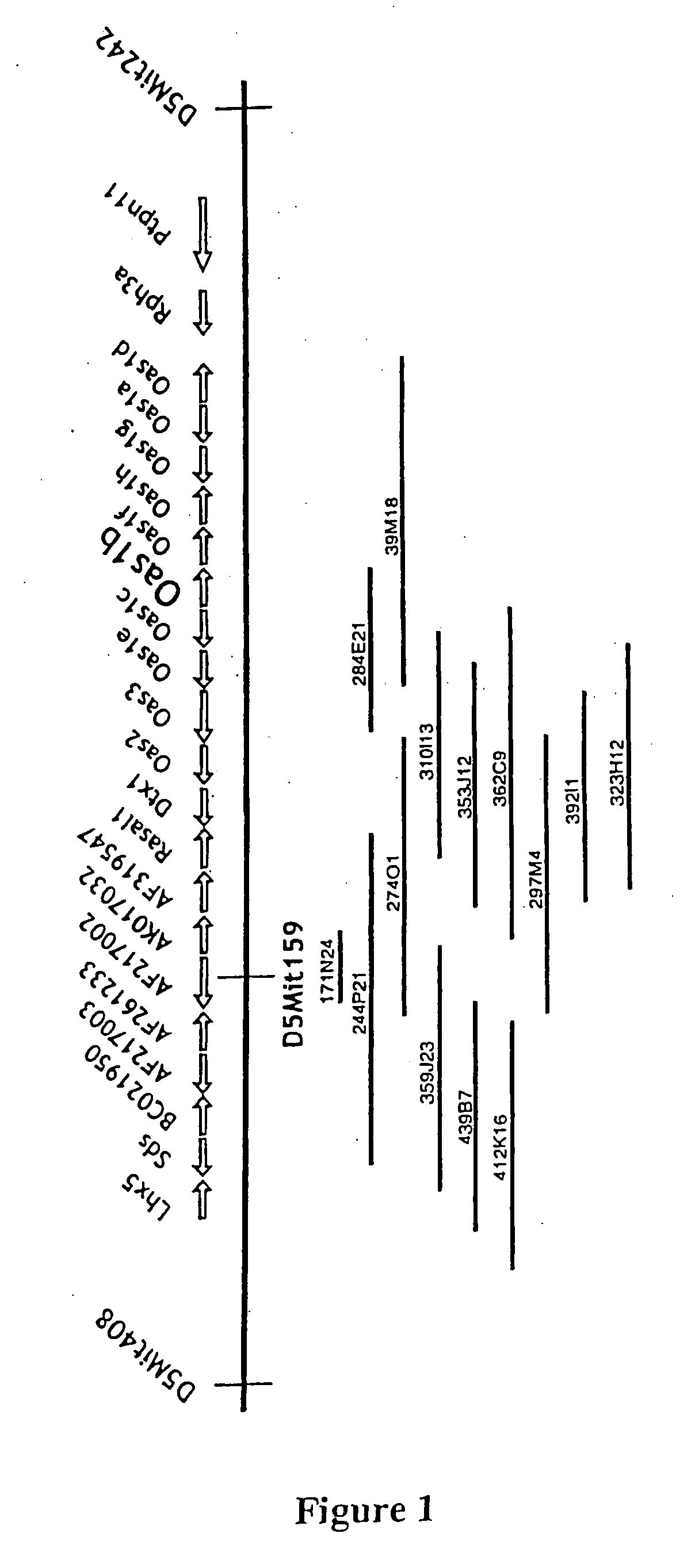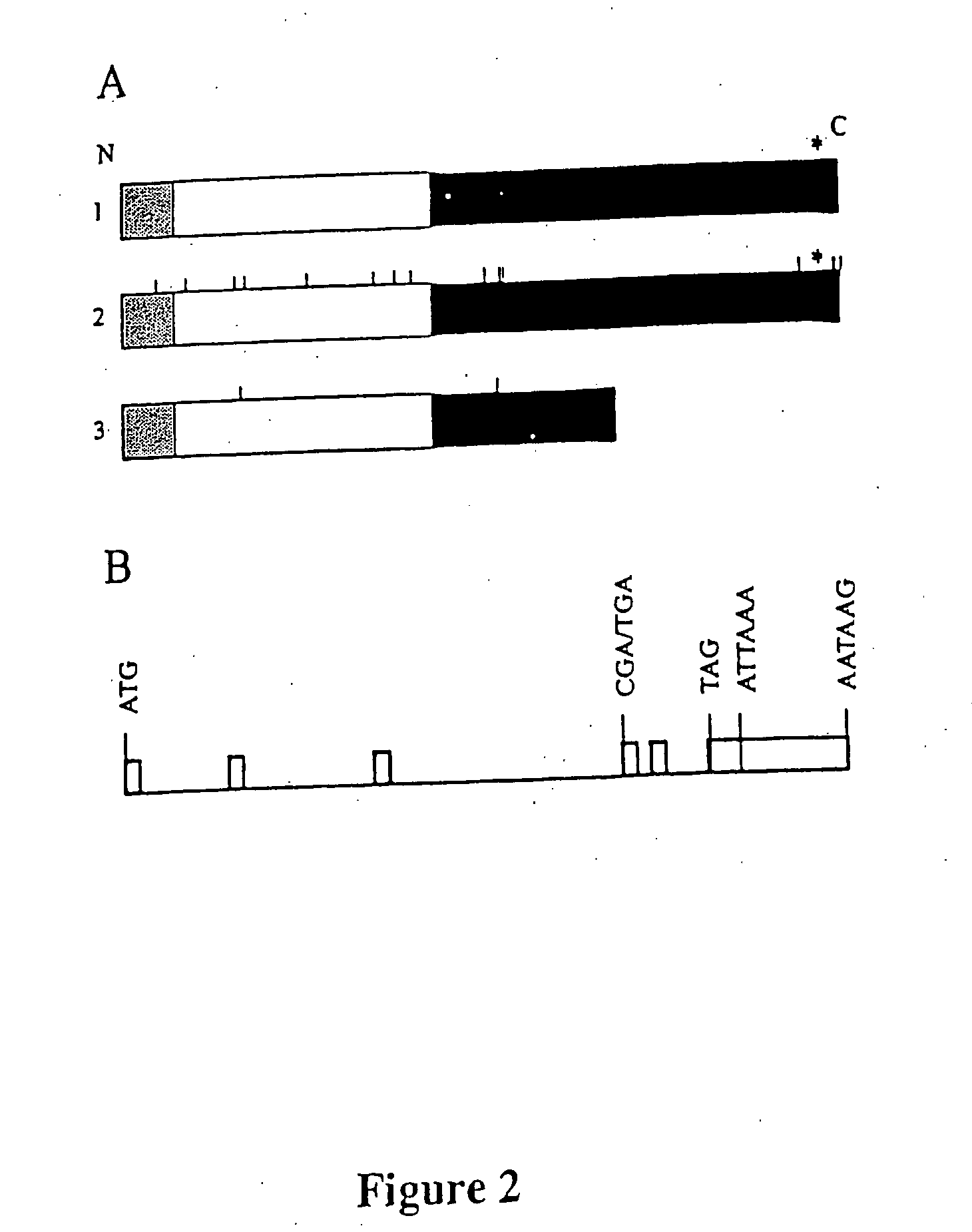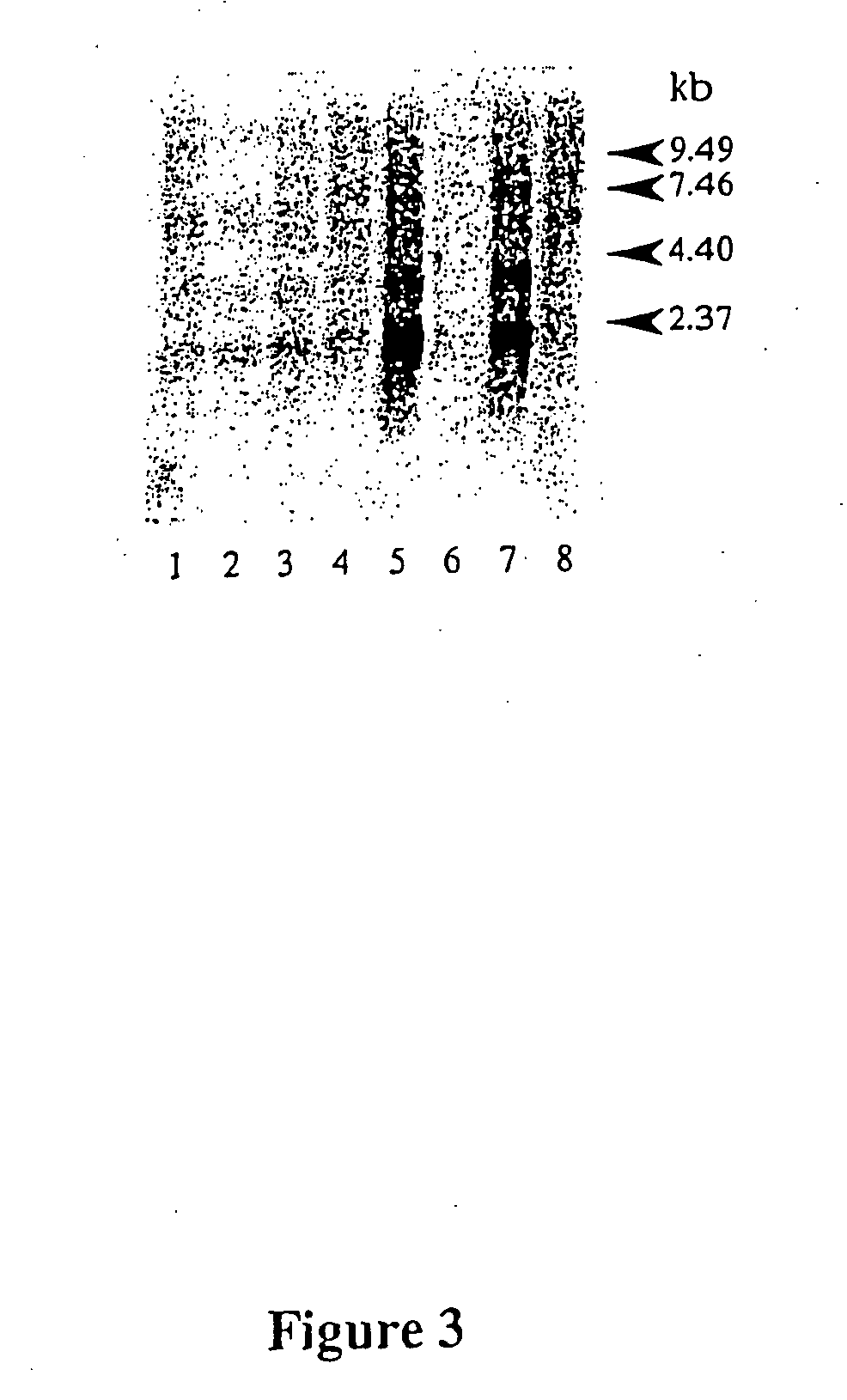Compositions and methods for viral resistance genes
a technology of viral resistance and composition, applied in the field of composition and methods of viral resistance genes, can solve the problems of no tests or assays that would enable one to predict the individual's health, many human and animal suffering, and sometimes death,
- Summary
- Abstract
- Description
- Claims
- Application Information
AI Technical Summary
Benefits of technology
Problems solved by technology
Method used
Image
Examples
example 1
Cell Cultures and Virus Stocks
[0077] Cell lines were previously established by SV-40 transformation of embryofibroblasts obtained from congenic C3H.PRI-Flvr and C3H / He (9). Baby hamster kidney (BHK-21 / WI2) cells (referred to hereafter as BHK cells) were used for virus plaque assays (8).
[0078] The cDNAs corresponding to the ORFs of the C3H.PRI-Flvr alleles of the Oas1b (AF328926) and Na+ / Ca2+-exchanger (AF261233) genes were cloned separately into the pEF6Ny5-His-TOPO mammalian expression vector (Invitrogen) and these plasmids were transfected into susceptible C3H / He cells using LipofectAMiNE 2000 (Life Technologies). Stable integrants were selected using blasticidin S and cells from individual foci were isolated with cloning rings and propagated. Expression of the recombinant proteins, which contained C-terminal 6×His and V5 tags, was analyzed by Western blotting of cell lysates using V5 antibody (Invitrogeen). Stable cell lines expressed a low level (1×), an intermediate level (8...
example 2
Construction of the BAC Contig
[0080] A single genomic clone, 171N24, which contained the D5Mit159 marker and was about 40 kb in length, was isolated from a mouse BAC library (Baylor College of Medicine) using a unique probe derived from D5Mit159. The terminal sequence obtained from the T7 promoter side of the 171N24 clone did not match any of the DNA sequences in the GenBank database, but the sequence located next to the SP6 promoter was part of a large interspersed repeat. Additional BAC clones were subsequently isolated from the RPCI-23 C57BL / 6 mouse BAC library (Roswell Park Cancer Institute) using a probe designed from the 171 N24 clone sequence adjacent to the T7 promoter. Four positive signals were detected and the clones, 244P21, 27401, 297M4, and 359J23, were purchased and analyzed. The size of the insertion in each clone was estimated from restriction patterns observed after pulse-field gel electrophoresis. The terminal DNA sequences for each of the BAC clones were determ...
example 3
Isolation of Transcription Units From the BAC Contig
[0083] Direct cDNA selection, exon trapping and searches of genes annotated in the Celera database (www.celera.com), were used to identify transcripts from the Flv interval. Direct cDNA selection was performed according to the protocol of Lovett (17) using adaptor-ligated double-stranded cDNA prepared from C3H.PRI-Flvr cells. Exon trapping was performed using an Exontrap kit (MoBiTec). The cDNAs obtained after each exon trapping or cDNA selection experiment were tested by hybridization with the different BAC clone DNAs, and those that showed specific hybridization with the initial BAC clone DNA were cloned into a pCR-XL-TOPO vector (Invitrogen) and sequenced.
[0084] The length of the mRNA corresponding to a partial cDNA isolated by cDNA selection or exon trapping was estimated by Northern blotting using the method of Sambrook et al. (18). The partial cDNA sequences were extended by RACE using a Marathon cDNA amplification kit (Cl...
PUM
| Property | Measurement | Unit |
|---|---|---|
| Fraction | aaaaa | aaaaa |
| Fraction | aaaaa | aaaaa |
| Electric charge | aaaaa | aaaaa |
Abstract
Description
Claims
Application Information
 Login to View More
Login to View More - R&D
- Intellectual Property
- Life Sciences
- Materials
- Tech Scout
- Unparalleled Data Quality
- Higher Quality Content
- 60% Fewer Hallucinations
Browse by: Latest US Patents, China's latest patents, Technical Efficacy Thesaurus, Application Domain, Technology Topic, Popular Technical Reports.
© 2025 PatSnap. All rights reserved.Legal|Privacy policy|Modern Slavery Act Transparency Statement|Sitemap|About US| Contact US: help@patsnap.com



